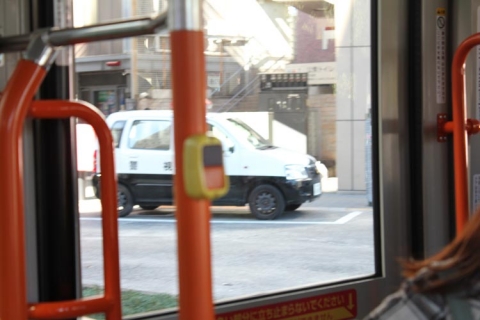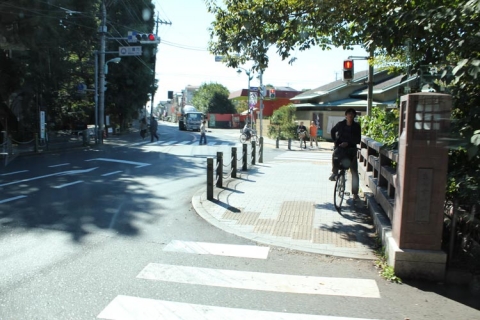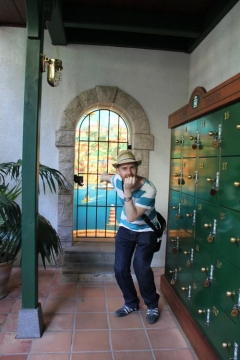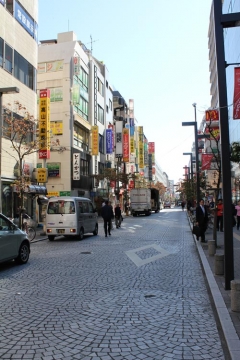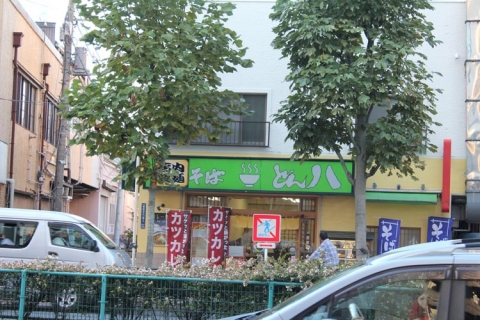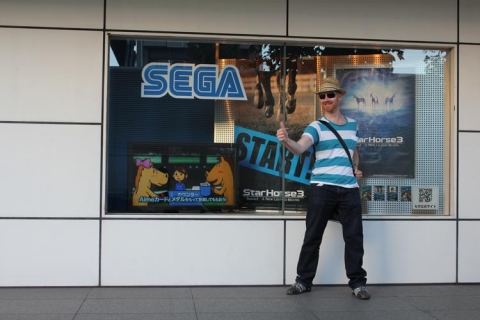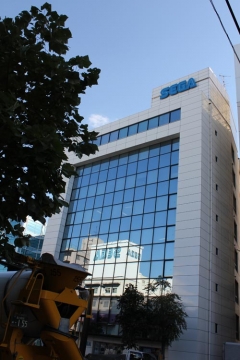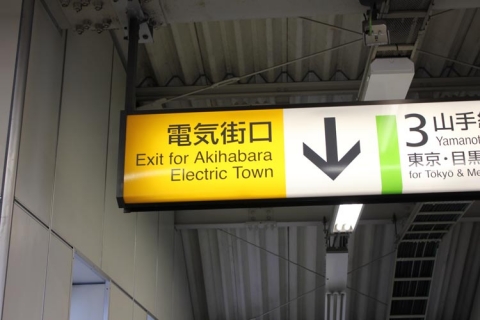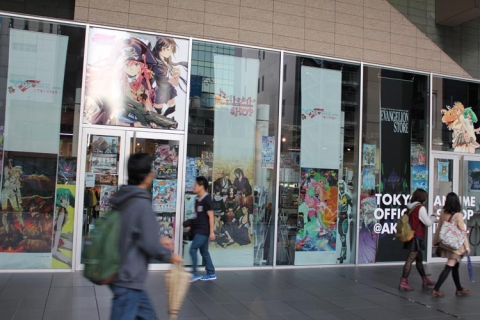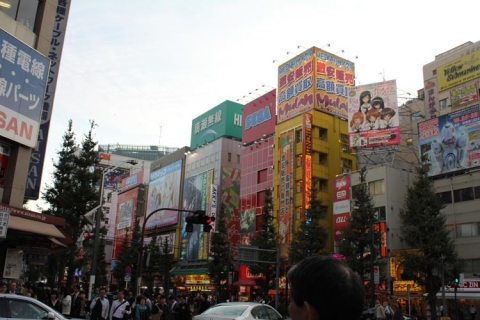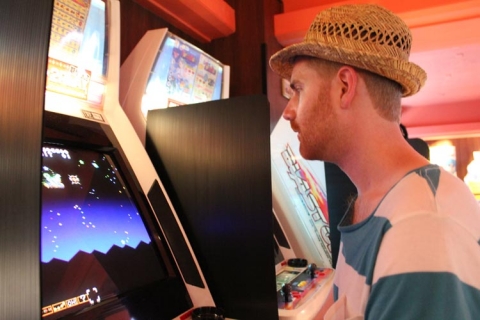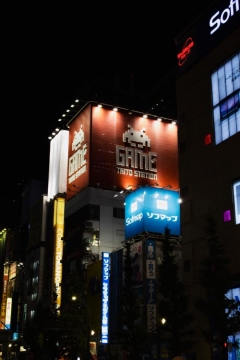Japan 2012 Travel Diary, Day 2
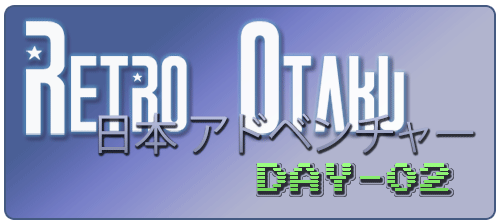
Wednesday was officially nerd day, where Wifey was happy to indulge the crazy nerd adventures I’ve been wanting to do in Japan for many years. After a slight sleep-in and a nice buffet brekky, we hit the subway station to make our way out to Mitaka to visit the Studio Ghibli Museum.
Being a long-time anime fan who jumped on the bandwagon around ’94 when Siren started distributing the classy Manga Entertainment label of anime locally, over the years I developed an incredible love of Studio Ghibli’s work. The first Ghibli movie I saw was Miyazaki’s Porco Rosso, thanks to SBS screening it around ’96. In 2001 Princess Mononoke had a limited screen at the Palace Nova in July that year, and around the same time I bought my first DVD player (a multiregion Pioneer DV-344) and started importing all the Studio Ghibli releases direct from Japan.
The trip to the museum was amazing for two reasons. The obvious one is the museum itself – I had never contemplated that a physical structure could in any way capture the whimsy, charm and nostalgia typical of Studio Ghibli productions, but somehow it had. This is the kind of experience that is difficult to put into words, because it was at once tangible but yet ephemeral at the same time. There was a screening of a specially-produced short movie in the small theatre, a big Nekobus that the kids were going crazy over, rotating exhibitions (which I think was looking at the history of folk tales in the West), the giant from Laputa on the roof, a cafe, book store, gift store (named after the Mama Aiutto from Porco Rosso) and a recreation of the working space of Miyazaki or Ghibli staff (I believe), with some amazing memorabilia all over the place, including lots of sketches, cells and production gear from various Ghibli movies. There was a particularly big emphasis on Kiki’s Delivery Service, which being my favourite Ghibli movie, was great to see.
After making a modest deposit at the gift and book stores (I had to resist the temptation of spending around $500 on getting a framed cell from Princess Mononoke or Kiki’s Delivery Service), we jumped back on the shuttle bus that went from the museum to Mitaka Station. Now this is where the second part of this experience came into its own – whereas the original bus between the station and the museum was pretty direct, this time we wound through all the back streets on the way back to the train station. This was a mind-blowing experience – Mitaka is a really pretty city, with residential houses, busy main streets and bikes everywhere. It evokes the same qualities that many of the nostalgia-infused moments in Ghibli movies set in more contemporary circumstances, like Whisper of the Heart or From Up On Poppy Hill (despite the discrepancy in time periods).
Next up was the sacred pilgrimage that is, in many ways, one of the other important things from this journey – visiting the Sega headquarters in Ohta. To get there was an exercise in patience on behalf of Wifey, is it was a little convoluted! We took one of the JR lines to Shinagawa Station from Shinjuku, and from there we transferred to one of the private lines to get to Otorii. Things got tricky because we used the wrong entrance/exit (we should have exited out of the main JR gate using our JR pass, then used our Pasmo card to get to the Otorii line), and then we weren’t sure which train to catch to get to Otorii since there were a handful of options. We took one of the local lines on the Haneda route to get off at Otorii. After exiting Otorii we started walking the wrong way, then turned around and realised that if we looked both ways when we exited the station originally, we would have noticed the great big Sega logos on top of two buildings down the street.
We stopped at a neighbourhood soba place to eat an amazing (and cheap) meal of plain soba with dipping sauce and spring onion and wasabi paste (around ¥280 each!), then walked down to the Sega building, where I was finally, after years of obsessive fanboy passion, able to step on hallowed ground. And it was awesome 🙂
Unfortunately the building was closed for some reason, but Wifey indulged my nerd spirit by peering through the windows and trying to take picture of things, including some people who must have come out of a meeting and walked through the lobby.
At some stage I think we had started attracting the attention of the police nearby and we promptly left while trying to look unsuspicious (which probably didn’t work – a gaijin with a limp and a hat to protect his thinning ranga hair don’t exactly blend in over there). As we were walking down the street I saw the people from the lobby in front of us, and being excitable, took their picture while walking quickly down the street in a fit of nerdy giggles. In my mind I imagine they had just come out of an amazing meeting at Sega, but I lacked the Japanese skills (and balls) to ask them anything.
Once the pilgrimage was over, we grabbed a couple of yummy pastries from Peter’s Deli (I think that’s what it was called) at the entrance of the Otorii Station, then made the trek back to Shinagawa, then we hit one of the JR Lines to visit the final nerd stop for the day – Akihabara!
As much as it’s a clich&eaccend;, Akihabara still put an amazing smile on my face. The first stop was the Tokyo Anime Centre in the UDX building to grab an English language version of the Akihabara map (thanks to Orochinagi for the tip!), then off we went to explore.
Despite getting lost a few times, it was good fun – we hit up Super Potato, Trader 2, Mandarake and Sofmap before stopping off at Club Sega. I didn’t play stacks of games since it was getting late, but I had a whirl at Parodius: Fantastic Journey in honour of my brothers Miguel and Tank, and my mate McAdam in honour of the amount of hours we sunk into this game on the Saturn. I managed to get about three or four stages in on a single credit which I was pretty happy with, and Wifey noticed a couple of the locals stopped to watch me play, so maybe I wasn’t doing too badly 🙂
We then checked out the other floors, and the top floor showcased the most amazing Gundam team battle game I’d ever seen, resembling a fusion of Virtual On and the Gundam universe with an awesome team-based mechanic.
Part way up we came upon a floor of SSF4AE (Super Street Fighter 4: Arcade Edition) machines, and I had the balls to Ken scrub on a machine against a Japanese player with a massive score card playing as Fei Long. I got owned without landing a hit on the first round, won the second round, then lost the subsequent rounds without being able to put up much of a fight.
We were about to exit when I noticed there was a basement floor, so down we went and I was greeted by one of the most amazing sights ever – a floor dedicated to only Virtua Fighter 5: Final Showdown. Once again I plonked in ¥100 and took on another player with Sarah, the only character I’ve invested much time in over the years since getting hooked on the series since the VF2 days. The outcome was similar to SSF4AE – was annihilated in the first round as Akira juggled me with some amazing techniques, held my own in the second round, then lost the next two without being too much of a challenge. With my VF dreams complete (playing VF in Japanese arcade, regardless of winning or losing), I had a crack at a crane game (and lost!), then off we went to Book Off for some final nerding before finding a nearby place to grab a bite.
We found a place near the Akihabara Station that promised casual dining and enjoyed some awesome Japanese beer, edamame, an amazing pot of gyoza and a selection of skewered awesomeness (including vegetarian skewers, chicken thighs, chicken liver, tendons and gizzards – the kind of thing encouraged by Bourdain and Zimmern when traveling!). Bellies full, it was time to go home after a massive day.
To view all posts on the Japan 2012 Travel Diary, just use the 2012 Japan Trip tag, as the whole series will be added to it over time.
